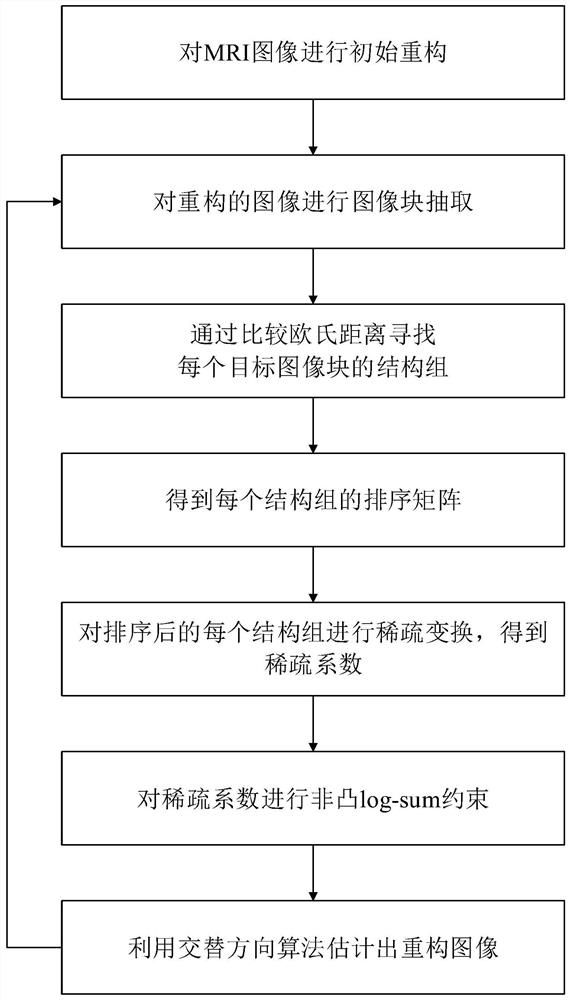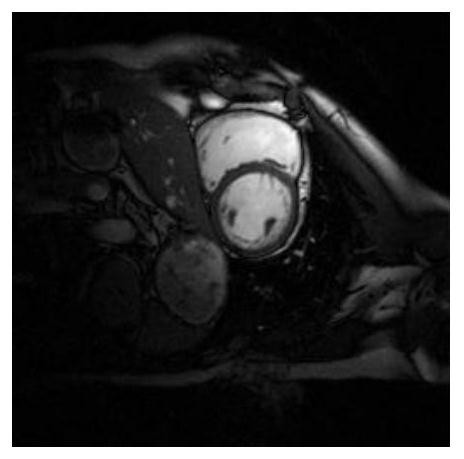A cs-mri image reconstruction method based on non-convex constraints of ranking structure group
A non-convex constraint, image reconstruction technology, applied in image enhancement, image analysis, image data processing and other directions, can solve the problem of easy over-fitting and high dictionary complexity, to improve the sparsity, enhance the ability of sparse representation, Good overall visual effect
- Summary
- Abstract
- Description
- Claims
- Application Information
AI Technical Summary
Problems solved by technology
Method used
Image
Examples
Embodiment Construction
[0028] refer to figure 1 , the present invention is based on the CS-MRI image reconstruction method of the non-convex constraints of the sorting structure group, and the specific steps include the following:
[0029] Step 1. Initially restore the image and establish a structure group corresponding to each image block.
[0030] (1a) Input a piece of MRI original K-space observation data y, use the total variation method to perform initial reconstruction on it, and obtain the initial reconstructed image x (0) ;
[0031] (1b) Divide the image according to the size of The image block is extracted, and for each target image block x i Euclidean distance comparison with other image blocks within the search range;
[0032] (1c) Take out the target image block x i S-1 image blocks with the smallest Euclidean distance, and form a structure group X with the target image block i =[x i,0 ,x i,1 ,...x i,S-1 ], where x i,0 =x i .
[0033] Step 2, since all similar image blocks i...
PUM
 Login to View More
Login to View More Abstract
Description
Claims
Application Information
 Login to View More
Login to View More - R&D
- Intellectual Property
- Life Sciences
- Materials
- Tech Scout
- Unparalleled Data Quality
- Higher Quality Content
- 60% Fewer Hallucinations
Browse by: Latest US Patents, China's latest patents, Technical Efficacy Thesaurus, Application Domain, Technology Topic, Popular Technical Reports.
© 2025 PatSnap. All rights reserved.Legal|Privacy policy|Modern Slavery Act Transparency Statement|Sitemap|About US| Contact US: help@patsnap.com



